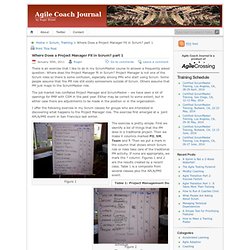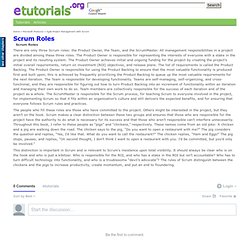

Command & Control: Let’s talk about power. January 2nd, 2012 Command and control isn’t just a mindset and a style of management (though it is both those things).

What we don’t often talk about is the power that rests with people in management roles. Traditional managers have power, and that power comes from different sources. Part of what rankles people in traditional organizations is the way managers wield power. I’m not suggesting throwing out all managers or eliminating all controls–controls help ensure a system is functioning within appropriate boundaries. The notion that managers must keep people in line assumes that those people are neither responsible nor intelligent–that left to their own devices, they will make irresponsible and stupid mistakes. One way to dis-aggregate power is to delegate some power to teams.
A Path from Command and Control to Agility. Have you ever noticed a team where with little engagement, a lack of ownership, and team decisions are scarce?

One reason could be the amount of command-and-control from management that is occurring. Often times this is one of those unspoken elephants in the middle of the room. Command-and-control bosses are a sure way to kill the feeling of ownership, engagement, and empowerment. Agile comes along and promotes self-organizing teams, transparency, and team decision-making. It also helps companies meet customers’ needs and adapting to the market conditions, ultimately leading to making more money.
If they feel they have command-and-control traits and are willing to make that move to Agile, they can test their comfort level with collaboration first. So I will leave you with this question. ServantLeadershipAgileTeams. Manager 2.0: The Role of the Manager in Scrum. Pete Deemer Scrum Training Institute petedeemer@scrumtraininginstitute.com When an organization starts to explore Scrum, there’s often an uncomfortable moment early on when someone points out that the role of "manager" seems to be missing entirely.

"Well I guess we’ll have to just get rid of ‘em all! " wisecracks one of the developers, and all the managers in the room shift uncomfortably in their seats. Scrum defines just three roles – Product Owner, Team, and ScrumMaster – and the basic direction given to others in the organization is to "support them, or get out of their way. " The traditional role of the manager in the corporate world is based on a model known as "command and control. " In complex, dynamic environments such as software development, this approach tends to break down. Scrum is based on a different approach: The Self-Organizing Team. In this example, it would have been faster and easier for Eileen simply to tell the Team what to do. Step 1. Step 2. Step 3. Step 4. Step 5. 1. Project Manager and/or Scrum Master. The roles of Scrum Master and Project Manager continue to be discussed in the blogsphere, with most commentators clearly distinguishing between the two roles and indicting they are not compatiable, and not suited to be combined.

Steve Hunton blogged on the Scrumalliance website that A Scrum Master Is Not a Project Manager by Another Name he says: Contrary to popular belief, the ScrumMaster and project manager roles are highly different and shouldn't be confused. As more companies migrate their project management to Agile, many do so without a proper understanding of what they're aiming for. Search. 1.

Scrum basic theory 2. Scrum for a business manager 3. Broken telephone 4. Retrospective 5/28/2009 12:00:00 AM The challenge Undoubtedly, there is a surge in the adoption of Agile within organizations, as noted by the Seventh Annual State of Agile Development Survey (2013), conducted by VersionOne, which points out that Scrum comprises of 54 percent of Agile development practi... 2/15/2014 12:39:12 PM Scrum misfits As a blogging product owner, I frequently run into Scrum misfits, either through responses on my blog or through the PO job descriptions I always check (no, I am not on the market). 9/19/2013 2:23:43 PM. Resources. Where Does a Project Manager Fit in Scrum? part 1. Home > Scrum, Training > Where Does a Project Manager Fit in Scrum?

Part 1 There is an exercise that I like to do in my ScrumMaster course to answer a frequently asked question: Where does the Project Manager fit in Scrum? Project Manager is not one of the Scrum roles so there is some confusion, especially among PMs who start using Scrum. Some people assume that the PM role still exists somewhere outside of Scrum. Others assume that PM just maps to the ScrumMaster role. Chapter 1: Backdrop: The Science of Scrum. There are only three Scrum roles: the Product Owner, the Team, and the ScrumMaster.

All management responsibilities in a project are divided among these three roles. The Product Owner is responsible for representing the interests of everyone with a stake in the project and its resulting system. The Product Owner achieves initial and ongoing funding for the project by creating the project’s initial overall requirements, return on investment (ROI) objectives, and release plans.